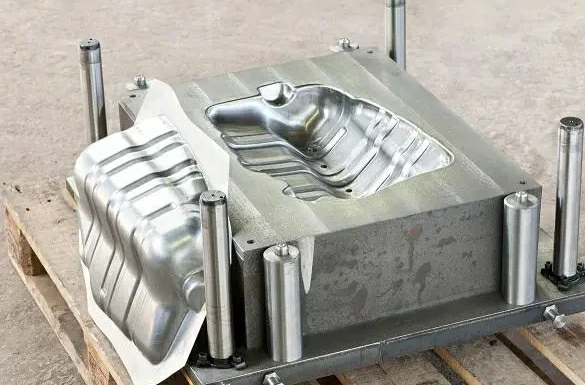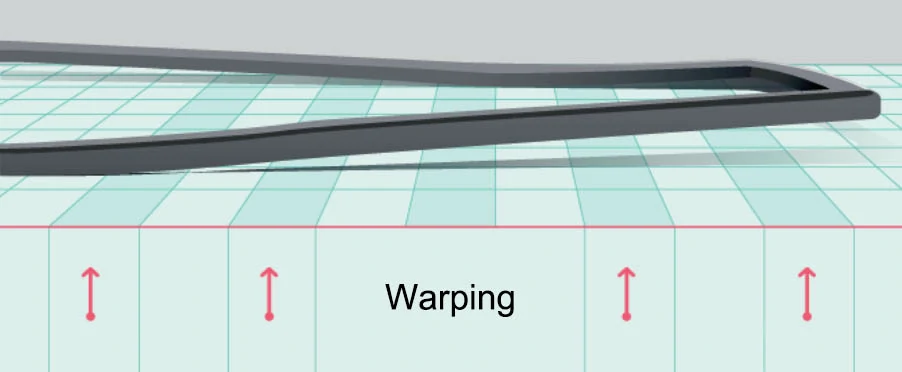In the complex world of injection molding, precision is crucial, and this is most evident in the separation of the molded part from the runner system. One of the key steps in this process is degating. Degating is the delicate process of removing the gate from the mold—the gate being the hardened extension formed by the cooling and solidification of molten plastic within the mold cavity.
Understanding the Gate
The gate is a narrow channel designed to control the flow of molten plastic into the mold cavity.The gate is typically located in an inconspicuous area of the part, allowing for easy removal during the degating process.
Its size, shape, and location can significantly impact the quality of the molded part, including its surface finish, strength, and dimensional accuracy.

Introduction to Degating
Degating refers to the process of removing the gate, a narrow channel connecting the mold cavity to the runner system, from a plastic molded device after the injection molding process. The gate solidifies along with the plastic part during the cooling process and needs to be carefully removed.
In traditional injection molding, degating was often a manual process that required skilled operators to carefully trim the gate from the molded part using sharp tools. This process was not only labor-intensive but also prone to errors, leading to scrap and wasted material.
In recent years, however, advances in injection molding technology have led to the development of self-degating molds. To improve efficiency and reduce scrap, manufacturers have increasingly adopted self-degating molds. These molds are designed to automatically separate the gate from the molded part during the ejection process, eliminating the need for manual trimming. Self-degating molds utilize specialized mechanisms and geometries to achieve this, such as thin, fragile gate sections that break away cleanly during ejection.
Self-Degating Principle in Injection Molding
The principle of self-degating relies on the design of a mold with two separate parting lines. In this approach, the first parting line initiates the flow of molten plastic, guiding it through the central runner and intricate runner system. This network of channels efficiently directs the plastic to a riser in the intermediate plate, ultimately leading to a gate that acts as the entry point to the molding cavity. Meanwhile, the actual parts to be molded are positioned in the second parting line of the mold.
During the mold opening process, the parting line containing the runner system opens first. As this happens, the runner system remains attached to the stationary side of the mold, allowing the gate in the intermediate plate to be severed cleanly from the newly molded part.
To ensure the successful ejection of the runner system and sprue, appropriate measures must be implemented once the first parting line has opened to a suitable degree. This typically involves mechanical or pneumatic ejectors that push the runner system and sprue out of the mold.
Once the runner system is ejected, the second parting line containing the molded parts opens. After the second parting line has opened to the necessary extent, the parts are ejected in the traditional manner using ejector pins or other ejection mechanisms.
The sequential opening of two parting lines necessitates a mold with a sufficiently large opening stroke to accommodate both steps. This can be a challenge, as many injection molding machines are not designed with this large of a mold opening stroke in mind. Additionally, a relatively tall mold mounting height is often required, especially for deeper parts, to provide adequate space for the actuating mechanisms that control the two-step opening process.
Benefits of Precision Gates
Precision gates enhance fillability, especially for parts with thin walls. Their precise design ensures that molten plastic flows smoothly and efficiently into the intricate sections of the mold, resulting in complete cavity fill and eliminating any potential unfilled gaps. This uniformity in part formation guarantees a high level of consistency and quality.
Sink marks, which are a common concern in injection molding, especially for thick-walled parts. Sink marks are imperfections on the part’s surface caused by uneven cooling. However, precision gates maintain a consistent distribution of molten material throughout the cavity, ensuring that each section of the part cools uniformly. This controlled cooling process minimizes the occurrence of sink marks, resulting in a smoother and more aesthetically pleasing surface finish.
Precision gates excel in handling challenging conditions, such as high-pressure drops within the injection molding system. They facilitate smooth plastic flow into the mold space, even under varying pressure conditions.
Precision gates induce localized heating of the steel surrounding the gate. This controlled heating prevents premature cooling and solidification of the molten plastic near the gate, ensuring that the plastic remains in a fluid state for a longer duration.

Pivotal Considerations for Avoiding Degating
When it comes to utilizing precision gates in the injection molding process, there are three crucial considerations that can significantly reduce the need for degating.
1. Optimizing Flow Channel Dimensions
To guarantee a smooth and uninterrupted flow of molten plastic, it’s imperative to ensure that the flow channels within the mold are adequately sized. These channels act as passageways for the molten material, allowing it to traverse the mold with ease. By preventing premature solidification, these generously proportioned channels ensure that the plastic reaches the cavity in a fluid state, ready for cavity filling.
2. Maintaining Consistent Injection Pressure
Injection pressure plays a pivotal role in the successful operation of precision gates. Machines with hydraulic drives are particularly adept at maintaining consistent pressure levels throughout the injection cycle. This consistent pressure ensures that the gates function optimally, allowing for a precise and efficient filling of the mold cavity.
3. Addressing Injection Speed Constraints
Certain drive types (such as spindle and toggle drives in plunger machines), may impose limitations on injection speed. These limitations can affect the flow resistance through the precision gates. It’s essential to be aware of these constraints and make adjustments accordingly to optimize the flow through the gates. By understanding and adapting to these speed limitations, you can ensure that the molten plastic flows smoothly through the gates, avoiding degating issues.
Experience BOYI Injection Molding Services
Conclusion
By understanding the gate, exploring the evolution of self-degating molds, and considering the essential considerations for successful implementation, manufacturers can optimize their injection molding endeavors and achieve higher levels of efficiency, quality, and productivity.
FAQ
Besides using trim dies, a common approach to degating involves tumbling the parts in an open-mouth oblique barrel, followed by screen separation. When dealing with small pieces in large barrel tumblers, the load tends to be densely packed, making it difficult to move and resulting in poor flow properties.
In addition to using trim dies, common method of degating involves hot blade degating, tumble in an open, laser degating, mechanical degating
Catalog: Injection Molding Guide

This article was written by engineers from the BOYI team. Fuquan Chen is a professional engineer and technical expert with 20 years of experience in rapid prototyping, mold manufacturing, and plastic injection molding.




